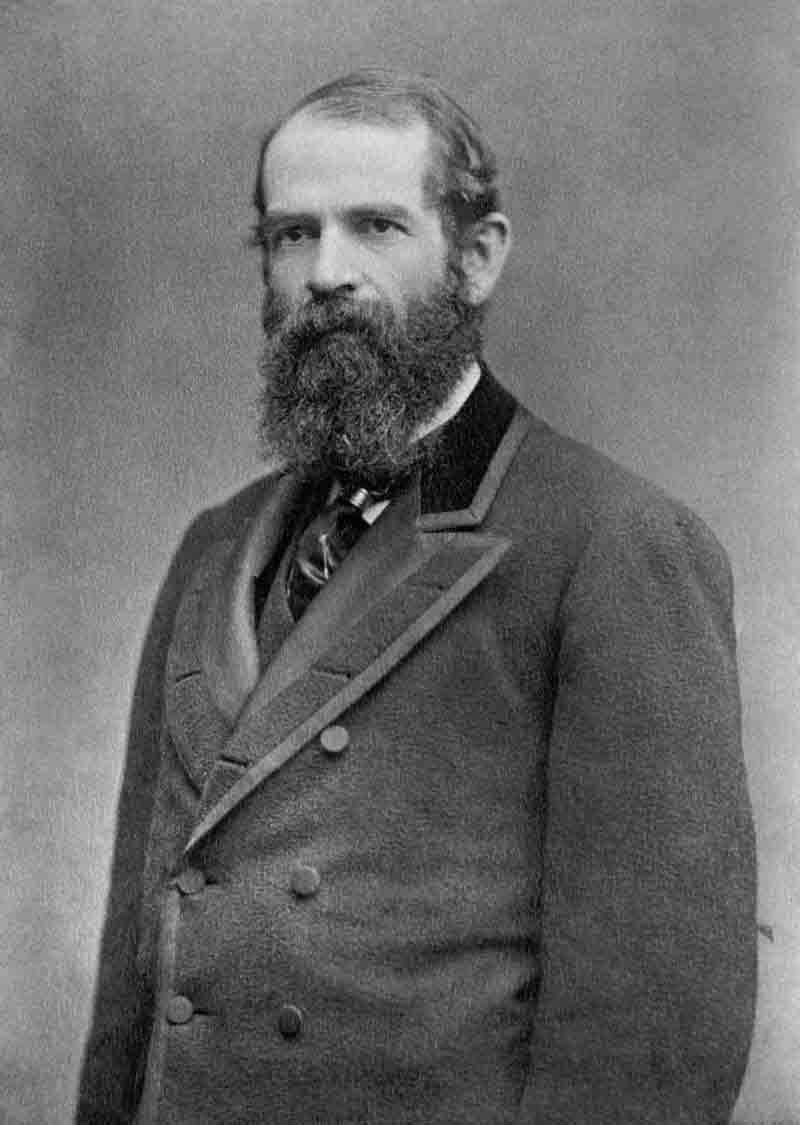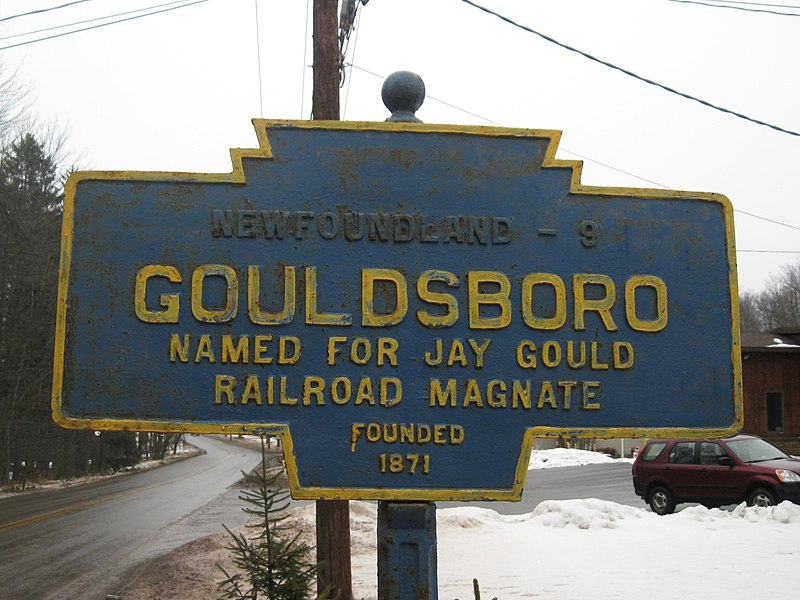Jay Gould
Entrepreneur, Surveyor, Map Maker, Railroad Baron and Investor

Jason Gould (May 27, 1836 - December 2, 1892) was an American railroad magnate and financial speculator who is generally identified as one of the robber barons of the Gilded Age. His sharp and often unscrupulous business practices made him one of the wealthiest men of the late nineteenth century. Gould was an unpopular figure during his life and remains controversial.
Gould was born in Roxbury, New York, to Mary More (1798-1841) and John Burr Gould (1792-1866). His maternal grandfather Alexander T. More was a businessman, and his great-grandfather John More was a Scottish immigrant who founded the town of Mooresville, New York. Gould studied at the Hobart Academy in Hobart, New York, paying his way by bookkeeping. As a young boy, he decided that he wanted nothing to do with farming, his father's occupation, so his father dropped him off at a nearby school with fifty cents and a sack of clothes.
Among other earlier endeavors, Gould also started an ice harvesting industry on the large Gouldsboro lake. In the winter ice was harvested and stored in large ice houses at the side of the lake. He had a railroad line installed next to the lake and he supplied New York City with ice during the summer months.
In 1859, Gould began speculative investing by buying stock in small railways. His father-in-law Daniel S. Miller introduced him to the railroad industry by suggesting that Gould help him save his investment in the Rutland and Washington Railroad in the Panic of 1857. Gould purchased stock for 10 cents on the dollar, which left him in control of the company. He engaged in more speculation on railroad stocks in New York City throughout the Civil War, and he was appointed manager of the Rensselaer and Saratoga Railroad in 1863.

Speaking for myself, this man was quite a character. In a shady deal to take control of the Erie Railroad, Gould almost started a war between the US and Canada over a actual kidnapping. After being forced out of the Erie Railroad, Gould started to build up a system of railroads in the Midwest and west. He took control of the Union Pacific in 1873 when its stock was depressed by the Panic of 1873, and he built a viable railroad that depended on shipments from farmers and ranchers. He immersed himself in every operational and financial detail of the Union Pacific system, building an encyclopedic knowledge and acting decisively to shape its destiny. Biographer Maury Klein states that "he revised its financial structure, waged its competitive struggles, captained its political battles, revamped its administration, formulated its rate policies, and promoted the development of resources along its lines."
By 1879, Gould gained control of three more important western railroads, including the Missouri Pacific Railroad. He controlled 10,000 miles (16,000 km) of railway, about one-ninth of the rail in the United States at that time, and he had controlling interest in 15 percent of the country's railway tracks by 1882. The railroads were making profits and set their own rates, and his wealth increased dramatically. He withdrew from management of the Union Pacific in 1883 amid political controversy over its debts to the federal government, but he realized a large profit for himself. He obtained a controlling interest in the Western Union telegraph company and in the elevated railways in New York City after 1881. In 1889, he organized the Terminal Railroad Association of St. Louis which acquired a bottleneck in east-west railroad traffic at St. Louis, but the government brought an antitrust suit to eliminate the bottleneck control after Gould died.
Legacy
Gould was a member of West Presbyterian Church at 31 West 42nd Street. It later merged with Park Presbyterian to form West-Park Presbyterian. He married Helen Day Miller (1838-1889) in 1863 and they had six children. Together with his son George, Gould was a founding member of American Yacht Club. He owned the steam yacht Atalanta (1883). Gould died of tuberculosis, then referred to as "consumption" on December 2, 1892, and was interred in the Woodlawn Cemetery, The Bronx, New York. His fortune was conservatively estimated for tax purposes at $72 million (equivalent to $2.17 billion in 2022, which he willed in its entirety to his family.